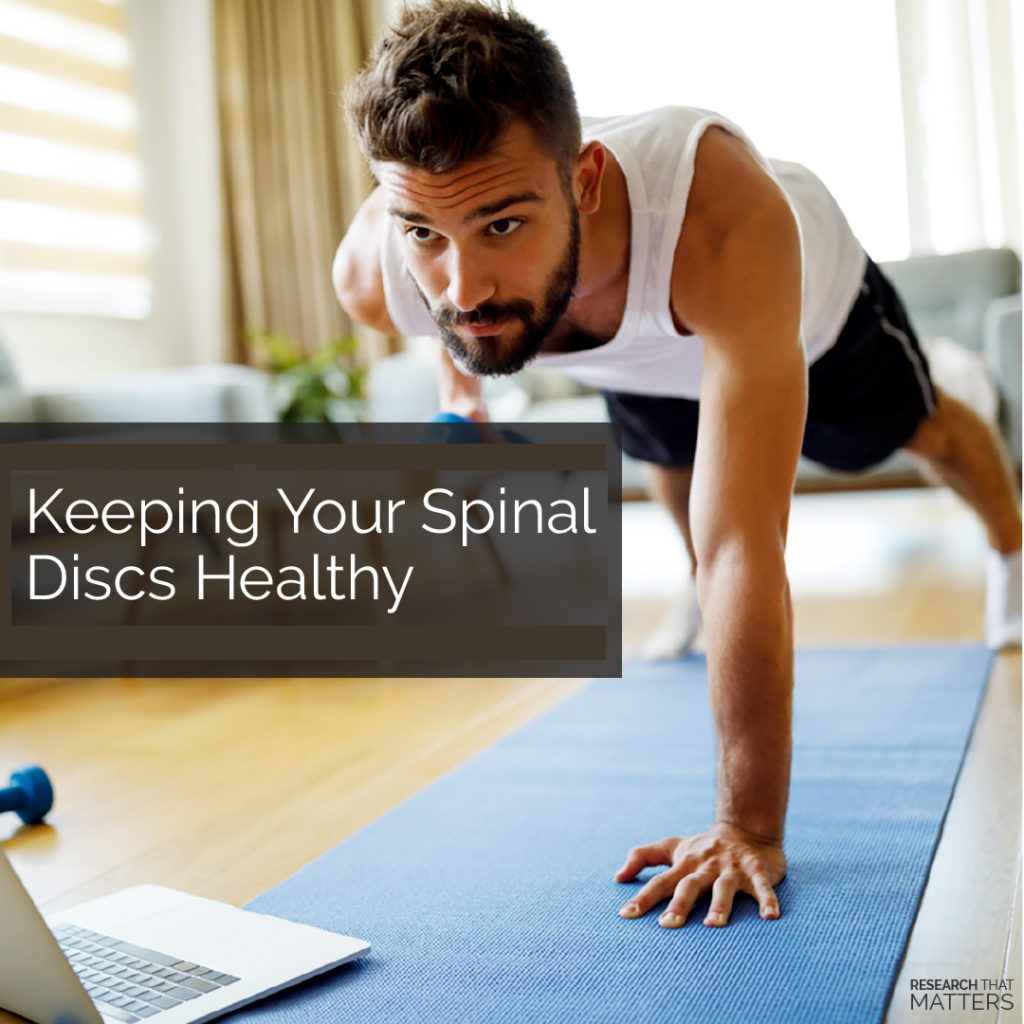Keeping your spinal discs pain free and healthy

Excuse my poor English but “Ain’t nobody got time for back pain!”
It is estimated that upwards of 85% of all individuals will experience an episode of low back pain in their lifetime. It is becoming more prevalent as we move into jobs that primarily call for sitting in front of a computer all day. Sitting all day leads to an increase in spinal disc pressure (discs are the shock absorbers between each of the vertebra of our spine). The increased spinal pressures have been shown to lead to disc bulges, protrusions and herniations.
A disc bulge or herniation occurs when a disc’s inner portion is trying to (or has) pushed through its tough outer layer.
When this happens, it can cause pain in two different ways.
· If the disc bulges far enough to press on a spinal nerve, you may notice pain that travels down your arms or legs.
· If the inside of your disc pushes through the outer layer, it could also cause severe inflammation resulting in pain.
These disc injuries most commonly occur between 45-65 years of age when discs are naturally more dehydrated and stiffer.
Proactively doing things today to help your spinal discs stay healthy in the future is a smart idea.
Every day, your spinal discs absorb stress related to gravity, your posture, and your movement patterns. Over time, this stress can cause wear and tear to your discs that can become painful.
The good news? There are a few key ways you can keep your discs healthy… starting today!
Not surprisingly, movement and exercise are the top ways to keep your spinal discs healthy.
- If you have to sit for long periods, try to change positions every 15 minutes.
A recent study found that sitting long periods of the day significantly decreased the disc height at L4-L5. Decreased disc height is associated with lower back pain and disability. The study further discovered that when they had the test subjects get up every 15 minutes and do 5 seconds of lumbar extension (leaning back) 5 seconds of lumbar flexion (bending forward) and 5 seconds each of bending left and right, that none of the subjects experienced any loss of disc height.
- If you have to work at a computer for hours at a time and you have the option, bring in a standing desk. Change from sitting to standing every 30-45 minutes. These small steps can help both reduce stress on your discs and engage the small muscles supporting your spine – both of which are essential for disc health.
- Also, mind your posture. The combination of inactivity and long periods in an unbalanced posture can wreak havoc on your spinal discs. Spinal discs have a poor blood supply, movement helps keep them healthy.
- Keeping your spine and supporting muscles strong by doing core exercises like the plank or side plank exercise will strengthen your spine and keep the stress off your discs. A great goal is to try and hold your plank for 60 seconds.
- Spinal adjustments improve your range of motion, allow the discs to get nutrients, decrease the risk of arthritis, and help to decrease pain.
Doing these 5 things will help keep your spinal discs healthy and are some of the best things you can do to reduce your risk of experiencing back pain.
“Now everybody has time for that!”
